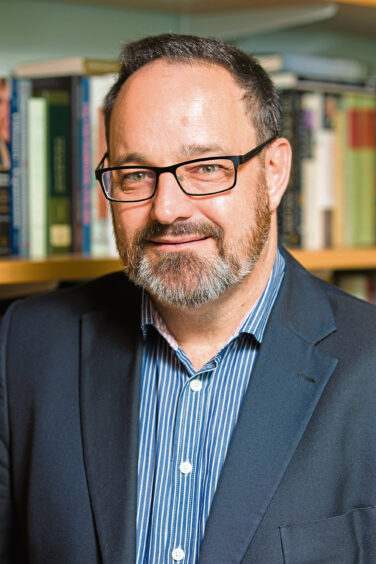
Today is one of the biggest days in the American calendar. People will celebrate with concerts, fireworks and barbecues.
Frank Cogliano, professor of American history at Edinburgh University, tells Sally McDonald the Honest Truth about the United States’ Independence Day.
Why is this day, July 4, special?
The Fourth of July is also known as Independence Day in the US. It’s remembered as the day that Congress declared the US independent from Britain in 1776.
How long have Americans been celebrating the day?
There were spontaneous celebrations of the Declaration of Independence in July 1776. George Washington, who commanded the Continental Army (which fought for American independence), had the Declaration read to the troops as they awaited a British attack. New Yorkers tore down a statue of King George III, which they beheaded, to celebrate the Declaration. From 1777, Americans have celebrated the day as a national holiday.
Why is the date important?
Congress approved the resolution declaring the rebellious colonies independent on July 2, 1776. John Adams (who helped write the Declaration of Independence) wrote: “The Second Day of July 1776, will be the most memorable Epocha, in the History of America. I am apt to believe that it will be celebrated, by succeeding Generations, as the great anniversary Festival… It ought to be solemnized with Pomp and Parade, with Shews, Games, Sports, Guns, Bells, Bonfires and Illuminations from one End of this Continent to the other from this Time forward forever more.” But the Fourth of July is the day Congress formally adopted the Declaration of Independence.
Why is the Declaration so important?
Americans see the Declaration as the founding creed of their nation. Its most important passage is: “We hold these truths to be self-evident, that all men are created equal, that they are endowed by their Creator with certain unalienable Rights, that among these are Life, Liberty and the pursuit of Happiness.”
But wasn’t slavery widespread in America at the time?
Unfortunately, yes. In 1776, 20% of people in the 13 rebellious colonies were enslaved. Thomas Jefferson, the main author of the Declaration, was a Virginian who enslaved approximately 200 people when he wrote those words. It is difficult to reconcile these things. In Jefferson’s original draft of the Declaration he included a condemnation of the slave trade, accusing George III of waging “cruel war against human nature itself, violating its most sacred rights of life and liberty in the persons of a distant people who never offended him.”
This was one of the phrases deleted by Congress between July 2 and 4. Had it remained the Declaration would have included a recognition of the rights and liberty of enslaved Africans, which would have made the Declaration’s assertion of equality truly universal. It would have made the Declaration a much more radical statement.
That is why the great abolitionist, Frederick Douglass in a powerful address in 1852 asked, “What, to the American slave, is your Fourth of July? I answer: a day that reveals to him, more than all other days in the year, the gross injustice and cruelty to which he is the constant victim.”
Is there a Scottish connection?
Two signers of the Declaration, James Wilson of Pennsylvania and John Witherspoon of New Jersey, were born in Scotland. Other signatories were of Scottish descent. It is also claimed that the Declaration was inspired by the Declaration of Arbroath, but this is untrue.
Do most Americans uphold and celebrate the day?
It is one of the biggest holidays in the US national calendar. There are celebrations such as outdoor concerts and fireworks, similar to those John Adams anticipated back in 1776.
Professor Frank Cogliano is author of Emperor Of Liberty: Thomas Jefferson’s Foreign Policy And Revolutionary America, 1763-1815: A Political History, and co-host of the Whiskey Rebellion podcast

Enjoy the convenience of having The Sunday Post delivered as a digital ePaper straight to your smartphone, tablet or computer.
Subscribe for only £5.49 a month and enjoy all the benefits of the printed paper as a digital replica.
Subscribe © Yao Hui
© Yao Hui